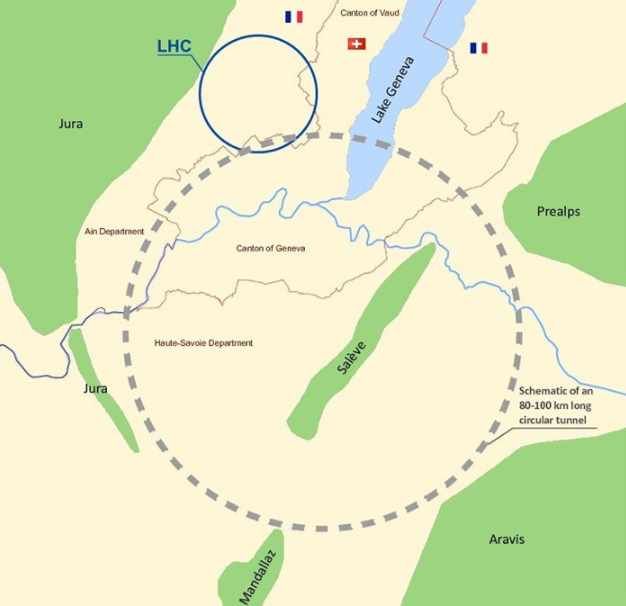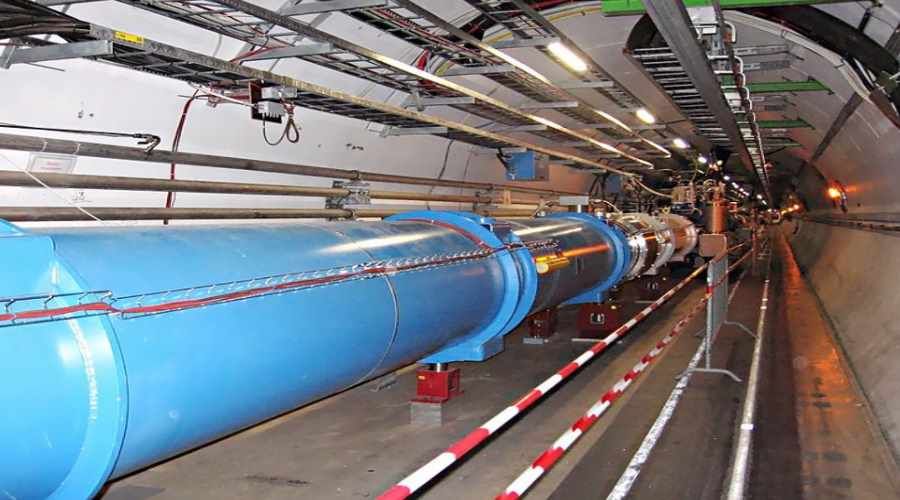A new particle gas pedal three times larger than the LHC will be built
From May 29 to June 2 in Berlin, more than 500 physicists from around the world discussed the future of particle physics. At the meeting, scientists also discussed plans to build a successor to the Large Hadron Collider.
The meeting was organized by the Future Circular Collider study (FCC) – a group of scientistsów, aimed at developing a concept for a research infrastructure that wouldóra will be the successor to the Large Hadron Collideróat (LHC).
The need to build a new, more powerful particle gas pedal is not because the LHC is malfunctioning. Work on the new gas pedal is dictated by the new experience, któThe LHC is not a place where the Higgs boson can simply be performed.
The LHC is of great importance to scientistsów. This is where the existence of the Higgs boson was confirmed in 2012. But the discovery „divine particle”, As the Higgs boson is often referred to, it has provided more questions than answers. Scientists believe the new gas pedal could helpóc to answer them and provide the necessary infrastructure to make further discoveries. Thanks to it, it may be possible to see hidden particles. This in turn may helpóc researchers to gain a deeper understanding of the laws of nature.
Run by the European Organization for Nuclear Research (CERN), the LHC is the largest machine in the world. It collides particles to release extreme levels of energy in an effort to reveal the elusive building blocks of the Universe.
The European Union has funded a four-year study to develop future experiments and the technology needed to achieve them. The study is called EuroCirCol and is based on collision energies reaching 100 TeV, while the LHC achieves about 14 TeV. This is one of the mainówings of the updated European Strategy for Particle Physics. Europe to maintain leadership in particle physics. The conceptual study of the EuroCirCol project is a direct response to this recommendation, conducted in coóhe cooperation with institutes and universities around the world.

LHC concept 2.0 is still being developed. Researchers want to place the new gas pedal in the immediate vicinity of the LHC – ie róAlso on the French-Swiss border, near Geneva. While the torus-shaped tunnel at the LHC has 27 kilometers ofóIn length, the tunnel of its successor will be 80-100 kilometersów.
– When we look at things like the motion of galaxies, we see that we can only understand and explain about five percent of the. of what we observe. But to answer questions such as those related to dark matter, which in turn is related to the fact that galaxies and stars don’t move as one would expect, the only explanation we have is that there must be matter, której we do not see która distorts motion – said Professor Michael Benedict, who directs the FCC’s research.
Researchers hope to have final designs for the LHC successor ready by the end of 2018. However, it could be years before the new gas pedal is built. From the first plansów is 30 years away from the launch of the LHC.
